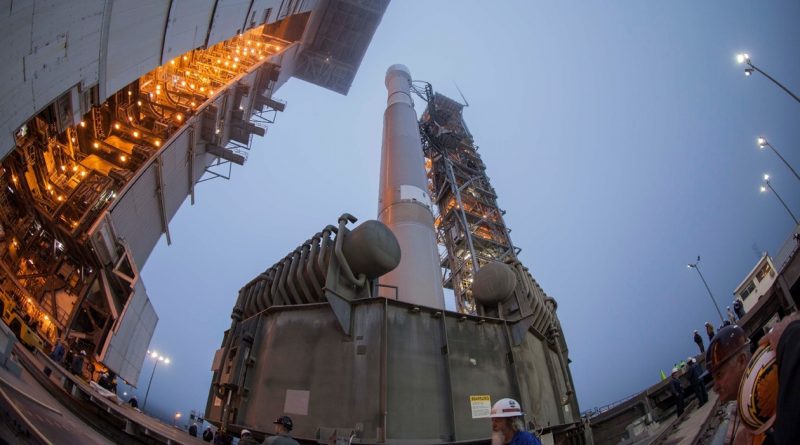Atlas V ready to launch WorldView-4 Imaging Satellite after Extended Delay
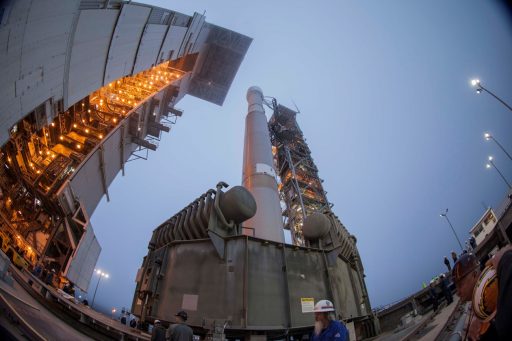
One of the most powerful Earth observation satellites under commercial operation is on the eve of its launch into orbit after weeks of delays due to technical issues and a massive wildfire raging near the California launch pad.
Hidden under the payload fairing of its Atlas V rocket, the WorldView-4 satellite is set for liftoff from Space Launch Complex 3E at Vandenberg Air Force Base during a 16-minute window opening at 18:30 UTC on Friday. At present, nothing is standing in the way of an on-time liftoff – damage from the fire has been repaired, all technical issues have been dealt with and weather is forecast to be pristine.
Liftoff comes exactly eight weeks after the first countdown for the Atlas V & WorldView-4 that went all the way to the T-4-minute mark on September 16 when the planned launch had to be abandoned due to a leaky Hydrogen umbilical. A re-aligned launch attempt two days later had to be canceled so firefighters could remain in place to battle a wildfire in a remote canyon on South Vandenberg Base.
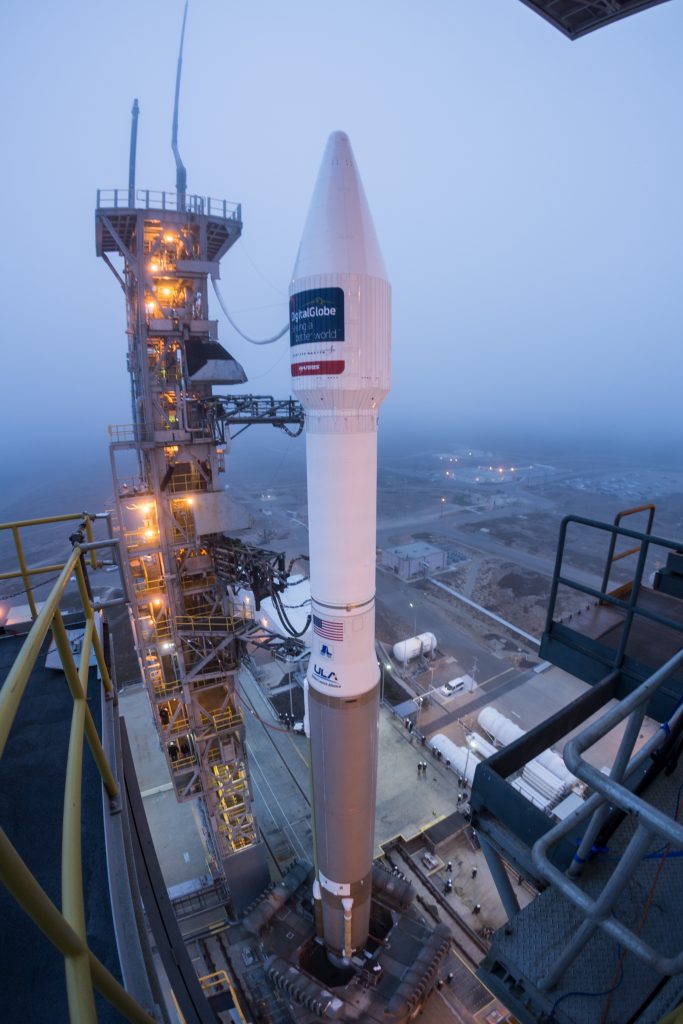
Despite the best efforts of over 1,000 firefighters, the fire grew into the largest ever seen in the area and it took nearly one weeks to contain the blaze after it had burned an area of 50 square Kilometers and came close to Vandenberg’s launch pads. Although the launch facilities themselves were not harmed, several weeks were needed to restore the Western Range infrastructure to an operational state as engineers had to test and repair the vast power and communications grid at the base.
Atlas V and the WorldView-4 satellite were kept safe sheltered inside the Mobile Service Tower at SLC-3E where additional generators and air conditioning systems had been set up by United Launch Alliance engineers.
The mission encountered another 5-day slip at the start of the month to provide additional time for engineers to resolve an Atlas V booster issue which subsequently also pushed the launch of the GOES-R weather satellite from Cape Canaveral from the 16th to the 19th.
Going through a seven-hour countdown starting in the early hours on Friday, Atlas V will be loaded with cryogenic propellants and go through final checkouts before pressing into a four-minute auto sequence. Rumbling off powered by its RD-180 engine, Atlas V will turn onto a south-westerly flight path to deliver its primary passenger to a polar orbit. The booster will hand off to the trusted Centaur upper stage four minutes into the mission for a single engine burn to reach the desired orbit 620 Kilometers in altitude.
Separation of the two-metric-ton imaging satellite 19 minutes into the flight will be followed by a secondary mission of two hours to release seven small CubeSats into a different orbit than the main passenger. Flying under a rideshare program sponsored by the National Reconnaissance Office, the CubeSats will be deployed from an Aft Bulkhead Carrier on the Centaur Upper Stage and complete different missions related to technical demonstrations.
Both the WorldView-4 satellite and Atlas V rocket can look back at an exceptionally long road to launch.
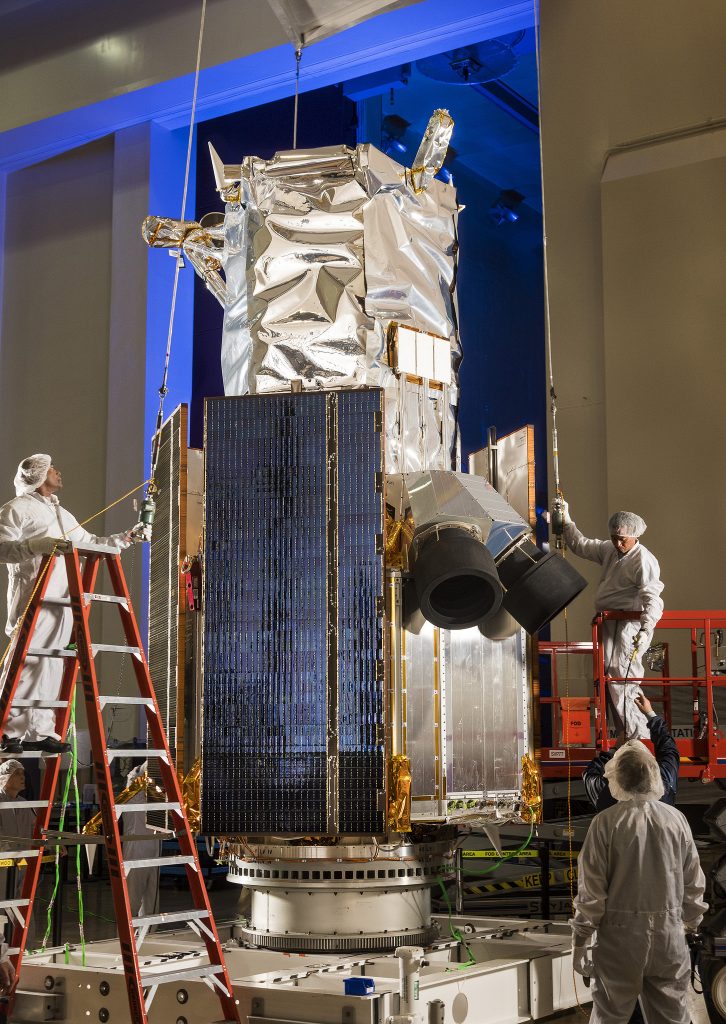
In fact, Atlas V has been sitting on its California launch pad since last December – originally assigned to launch NASA’s InSight Mars Lander in early March 2016. InSight had to be pushed to the next Mars launch window in May 2018 due to a problem with the lander’s prime seismic instrument.
After the delay, Atlas V was transferred to WorldView-4 that was pulled from storage after waiting for three years to be launched into orbit.
Lockheed Martin built the satellite for a 2013 launch for commercial operator GeoEye, but the launch was put on hold when satellite operator DigitalGlobe acquired the company.
The marriage of the two Earth-imaging firms meant that two separate satellite programs with independent launch plans had to be unified to best benefit the newly formed company. It was decided to keep the planned 2014 launch date for the WorldView-3 satellite and place WorldView-4, then named GeoEye-2, into extended storage and only launch it when its capacity was required.
The satellite uses Lockheed’s LM900 platform and stands 5.3-meters tall, outfitted with a large 1.1-meter telescope capable of delivering ground imagery at a resolution of 0.31 meters in the black-and-white panchromatic band and 1.24 meters for full color and near infrared data. Taking advantage of an agile pointing system, the satellite can cover an area of 66.5 by 112-Kilometers during a single flyover, collecting adjacent image strips.
DigitalGlobe was cleared by the U.S. Department of Commerce in 2014 to begin offering its highest resolution imagery on the commercial market after the company had been regulated only to sell high-resolution products to U.S. government users and select private entities while downsampling data for all other commercial users.
In mid-2014, the satellite was re-named WorldView-4 and launch was firmed up for 2016 to help DigitalGlobe satisfy demands for ultra high-resolution Earth observation products.
>>WorldView-4 – Technical Overview
Countdown & Launch Sequence
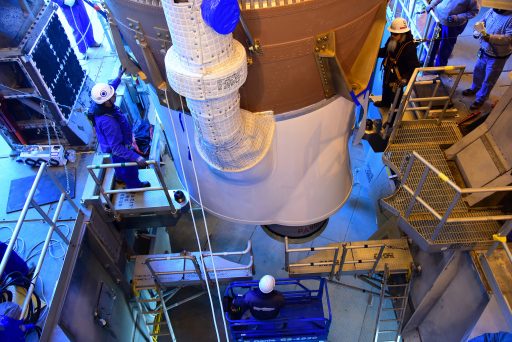
Atlas V will enter a seven-hour countdown sequence in the early morning hours, local time, to begin with the activation of the rocket’s systems for a thorough checkout. The Mobile Service Gantry will be rolled back five hours prior to T-0 to enable final pad close outs to occur before Atlas V heads into tanking after the countdown comes out of a planned hold at T-2 hours.
Over the course of a 90-minute sequence, Atlas V will receive cryogenic Oxygen and Hydrogen pumped into the first and second stage. Flying in the 401 configuration, Atlas V uses a two-stage stack with the RD-180-powered first stage loaded with 284 metric tons of rocket-grade Kerosene and Liquid Oxygen while the Centaur second stage holds nearly 21 metric tons of cryogenic propellants.
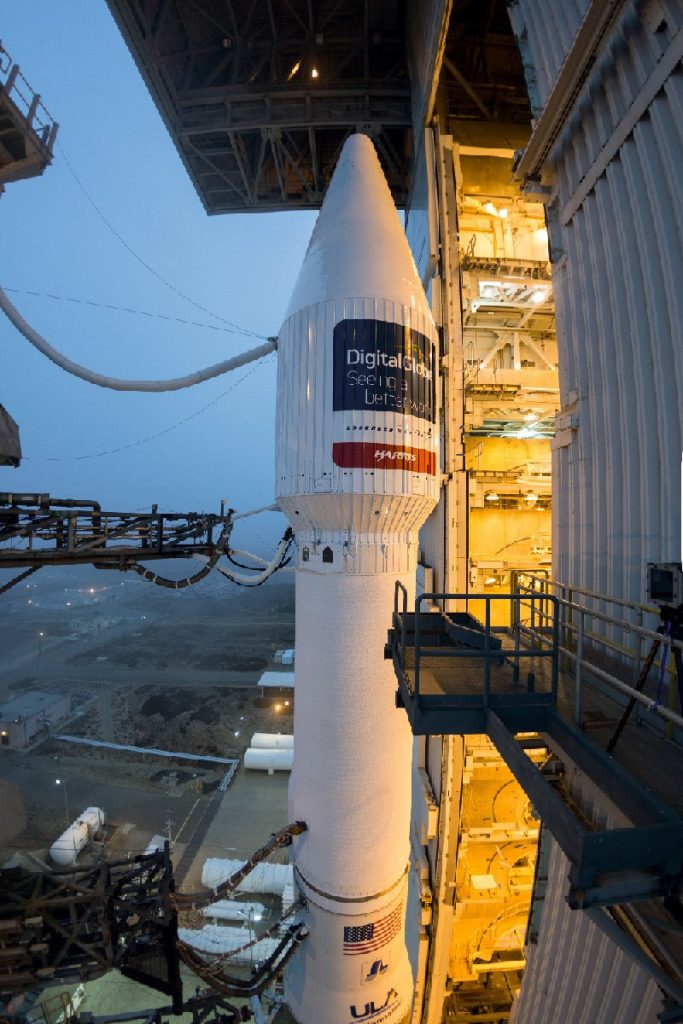
A final hold is scheduled at T-4 minutes to allow teams to catch up with any open items and assess the status of the launch vehicle, payload and western range as part of the final pre-launch poll. Ticking back from T-4 minutes, the highly choreographed countdown sequence will put Atlas V through the transition to internal power, the arming of the Flight Termination System, the pressurization of tanks and the handover of control to the vehicle’s computers.
The Russian-built RD-180 engine will start breathing fire three seconds ahead of liftoff, putting out a whopping thrust of 392-metric ton force to lift the Atlas V off the ground. The two thrust chambers of the engine will individually gimbal to hold the rocket in a vertical posture for the first 17 seconds of the flight before Atlas V will begin the pitch and roll maneuver to attain an initial launch azimuth of 185.6 degrees, departing California’s Central Coast of the south west.
Atlas V will push through the sound barrier 79 seconds into the flight and encounter Maximum Dynamic Pressure at T+94 seconds. While the RD-180 fires on all cylinders, the trusted Centaur stage will chill down its engine and pressurize its reaction control system to be ready to assume control of the flight.
RD-180 will shut down four minutes and three seconds into the flight followed six seconds later by separation from Centaur, pulling away through the use of retrorockets. Centaur will fire up its 10,400-Kilogram-force RL-10C engine to reach orbit with one continuous burn of 11 minutes and 18 seconds.
WorldView-4 is aiming for an insertion orbit of 610.5 by 628.3 Kilometers at an inclination of 97.96 degrees from where it will phase into a 617km Sun Synchronous Orbit with a local time of descending note at 10:30.
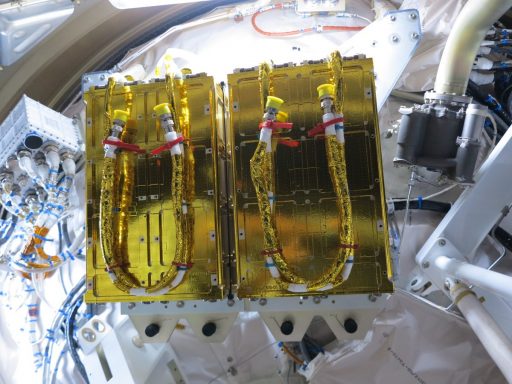
Separation of the main passenger is completed 19 minutes after liftoff, clearing Centaur to head into a secondary mission dedicated to the deployment of seven CubeSat payloads.
Designated ‘Enterprise,’ the CubeSats are sponsored by the National Reconnaissance Office and set out to complete various technical demonstration missions ranging from miniature propulsion systems, new small-sized transponders to radiation-detectors and atmospheric sensors.
The seven CubeSats will be released in a staggered fashion during a 14-minute sequence picking up two hours and 11 minutes after liftoff.
With the small CubeSats on their way, Centaur will re-start its engine and complete a disposal maneuver to enter heliocentric orbit, taking advantage of leftover performance to depart Earth for good.
Friday’s mission marks the 66th flight of the Atlas V, the 15th purely commercial Atlas V launch and the sixth of the year.

